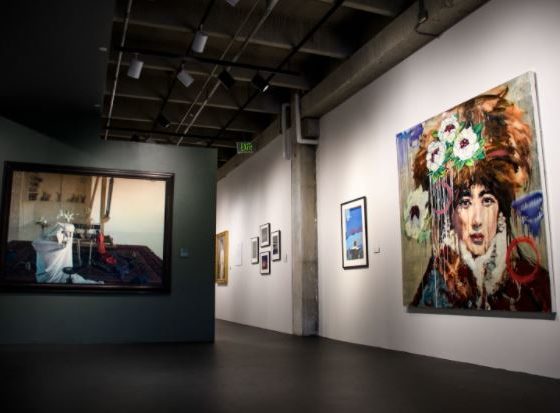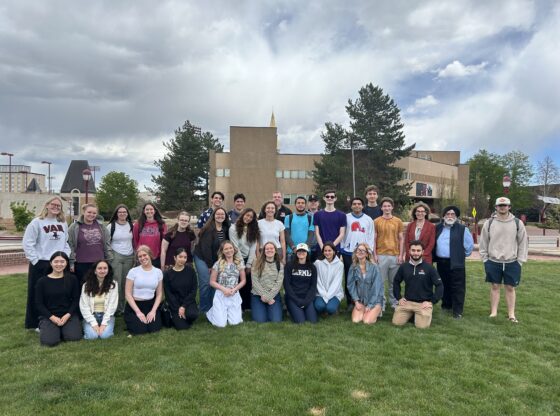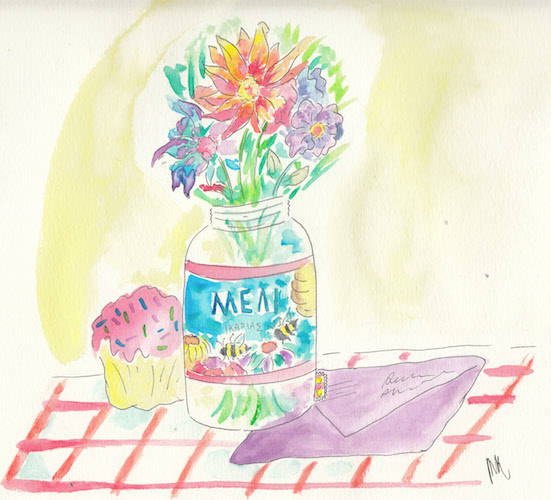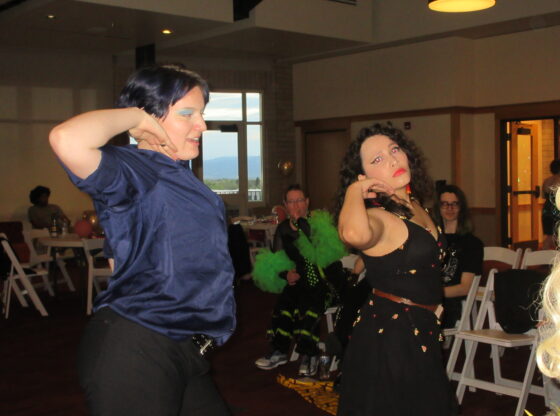The Portrayal: Figurative Art from the Madden and University Art Collections exhibition is a student-curated show in the Vicki Myhren Gallery at DU exploring the varying approaches to portraiture and figurative art.
These students, combining their historical research, curation skills and own intrigue of portraiture have selected a small series of artworks that they believe describes the deep breadth and complexity of portraiture as a form of expression.
In preparation for this exhibition, these student curators worked with the Madden Museum program director, Nicole Parks, to curate and install artworks both from the DU and Madden Museum collections. The gallery space is divided into four sections, each section dedicated to the works curated by each student group based on their own study of the theme of portraiture. Below are the different curation groups, with a short summary of their approach to studying portraiture and figurative art.
“Unearthing the Relational Self: Occupying & Embodying the Natural World,” by Megan Agams and Nicole Snider
How do we as human beings understand or define ourselves in relation to the natural world?
Agams and Snider explore the intricate depths of how we relate and interact with our surrounding environments, whether it may be in an artist’s own studio, a beach or even just a plain colored background. The artist’s choice of setting (or lack of setting) provides substantial meaning and significance to the portrait.
“Depicting Legacy: Private vs. Public Lives in Portraiture,” by Hilary Gibson and Katarina Guettlein
How do you wish to be remembered?
The artwork curated by Gibson and Guettlin displays the public legacy of cultural icons, from reverend Martin Luther King Jr., Sitting Bull, Queen Elizabeth II, even Salvador Dalí himself. Figurative art of cultural icons can be used to emphasize certain elements of their identity, memorialize their reputation, or sometimes try to change the way you view them.
An artist’s self portrait provides them with the opportunity to disclose their private life to the public, capturing their introspective moments as they memorialize themselves with their own craft. Similar to iconic portraits, self portraits have the ability to disclose or change the perspective of how people may view the artist in public light.
“Considering the (In)Complete,” by Savana Ames and Brissa Mendoza
What artist would you pick to create a portrait of you, and how would their style represent your identity?
Ames and Mendoza focus their selection of art around discussing how the artist’s choice in medium dictates a large meaning of the portrait. Through studying the displayed paintings, sketchbooks, screenprints, even lithographs, gallery attendants have the opportunity to decipher how the way the portrait is created defines the whole mood of the portrait.
Within their selection of work, some artworks seem unfinished or incomplete. When looking at a painted portrait, why would the artist leave some parts of the canvas uncovered? Why would some artists choose to leave their work incomplete, so to speak?
“Expressions of Identity: Personality in Portraiture,” by Celina Taylor Jackson and Clair Summerfield
In portraiture, what are some of the different ways in which chosen elements like clothing, portraiture, facial expression and setting convey facets of a person’s personality?
This selection of artwork curated by Jackson and Summerfield uncover how the elements of art and design, along with subject matter, create personality, material, and movement within an artwork. These components of an artwork capture unique identities and perspectives of not only the subject, but of the artist’s influence as well.
When studying a portrait, ask yourself: How is the person posed within the artwork? What does their body movement say about their identity, desires or emotion?
The exhibition is open from Oct. 15 to Nov. 28, located in the Vicki Myhren Gallery, in DU’s Shwayder Art Building. Visit the Vicki Myhren Gallery website to learn more about the gallery’s hours and upcoming exhibitions.











